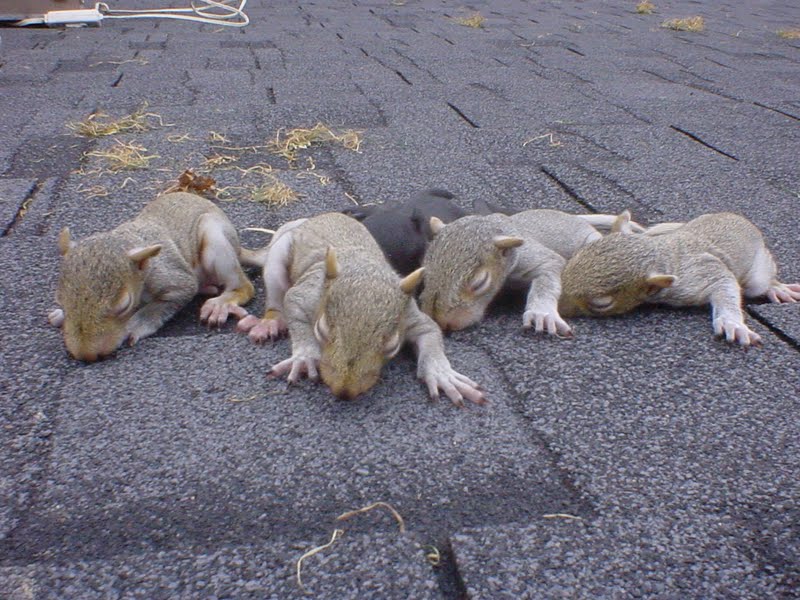Spring is prime time for spotting wee ones in the wild, from baby chicks to tiny squirrels. Observing wildlife babies is one of the joys of watching life’s renewal as winter thaws into spring. Grey squirrels are a common sight in our yards. When the little ones begin to venture from their nests, watching them scamper about learning squirrel survival behaviours is entertaining.
However, you do not want a new family living in your attic. An individual adult does enough damage, but a litter of youngsters just getting on their feet can have devastating consequences. Get ahold of the situation before they get ahold of your attic. Contact our Skedaddle wildlife removal Coquitlam experts for help dealing with a squirrel problem.
A Squirrel Is Born
Female squirrels may have two litters per year, each with anywhere from one to nine pups, though a typical litter contains three to five babies. The first little ones are born during March and April, and the second set usually arrives in mid to late summer. When they are first born, they are hairless and helpless. The pups depend on mom for nourishment and protection.
After the first couple of months of life living off of their mother’s milk, they begin to venture out to learn the ropes under mom’s tutelage. It doesn’t take long for them to figure out the best techniques for gathering and burying nuts, berries, grains and other scrumptious snacks. In a matter of a few months, juveniles mature into adults and strike off to find their own fortunes.
A Squirrely Problem
An expectant mother does everything she can to ensure the safe arrival and raising of her offspring. She seeks out the perfect spot to build a comfortable nest. Since she has to leave her young alone to forage for food, finding a location that safe from predators is critical. Your attic, walls or chimney become especially appealing to a pregnant squirrel.
To gain access, she may rip or chew through siding, roofing tiles and even brick! Once inside, she gets to work building the nest, utilizing ready-made materials like your home’s insulation and wiring. She may also include wood shavings that she creates by gnawing on your rafters. The damage can be costly and dangerous.
Keep your eyes peeled for damage to siding, soffits, flashing and roofing tiles, all of which may indicate the presence of a squirrel. You should also listen for sounds of squirrel activity. A female building her nest makes quite a bit of commotion, though her smaller size may make the sounds difficult to detect. She may also vocalize if she senses danger. When her babies are born, they may make a sound that resembles the noises young birds make.
A Saving Solution
It isn’t a bad idea to periodically survey your attic for signs of squirrel activity, especially in the early months of spring. It is best to identify and remove mama squirrels before the babies arrive. It will save you money in removal, cleanup costs and damage repairs. It is also a better option for the mother and her little ones, as Mom is fiercely protective and may become aggressive if she feels her pups are in danger.
Removing a single, adult squirrel rather than an adult and several babies reduces the risks to your family. Squirrels carry diseases that may infect the people or animals in your household. The most common of these are typhus, ringworm and tularemia. They can also transmit the plague. While this illness is rare, the cases that do occur are due to bites from infected rodents.
Who Can You Call for Help?
If you find out that you have a squirrel living in your house, let the Skedaddle wildlife removal Coquitlam specialists take care of the issue for you. We have the knowledge and know-how to safely and humanely remove resident squirrels, so contact us today to schedule services.



